Tony Randall: Much More Than Half of 'The Odd Couple'
- Oops!Something went wrong.Please try again later.
- Oops!Something went wrong.Please try again later.
- Oops!Something went wrong.Please try again later.
If the name Tony Randall only brings to mind Felix Unger in The Odd Couple, then you are in good company. But what many don't know is that he was an actor who enjoyed a 60-year career of consistent work that encompassed everything from radio to film, television and the stage.
He was born Anthony Leonard Randall on February 26, 1920 in Tulsa Oklahoma and attended Tulsa Central High School, where he had already developed an interest in acting, but, according to a 1951 story in Tulsa World, never really had a chance to explore it. “Very seldom did I pass the auditions for the class plays,” he noted. “They didn’t think I was good enough. [But] Miss Isabelle Ronan, one of my teachers, is one of the most wonderful persons anyone could hope to meet. She was my inspiration. It was through her that I became interested in the theater.”
Adds Tulsa World, “Tony was 18 when he left Tulsa to attend Northwestern University in Chicago. Later, he came to New York to study drama at the Neighborhood Playhouse and was such a good student they made him a teacher.”
He appeared in a number of shows, credited as Anthony Randall, among them George Bernard Shaw’s Candida, which led The Daily Item’s August 19, 1941 review to note, “Anthony Randall, young newcomer, seemed to live the role of Eugene Marchbanks, the pathetic poet who is smitten by the ridiculous fascination of a young boy for an older married woman. He left a deep impression on his audience and won a place in our little blue book as a young actor who’s destined for greater things.”
En Route to Greater Things
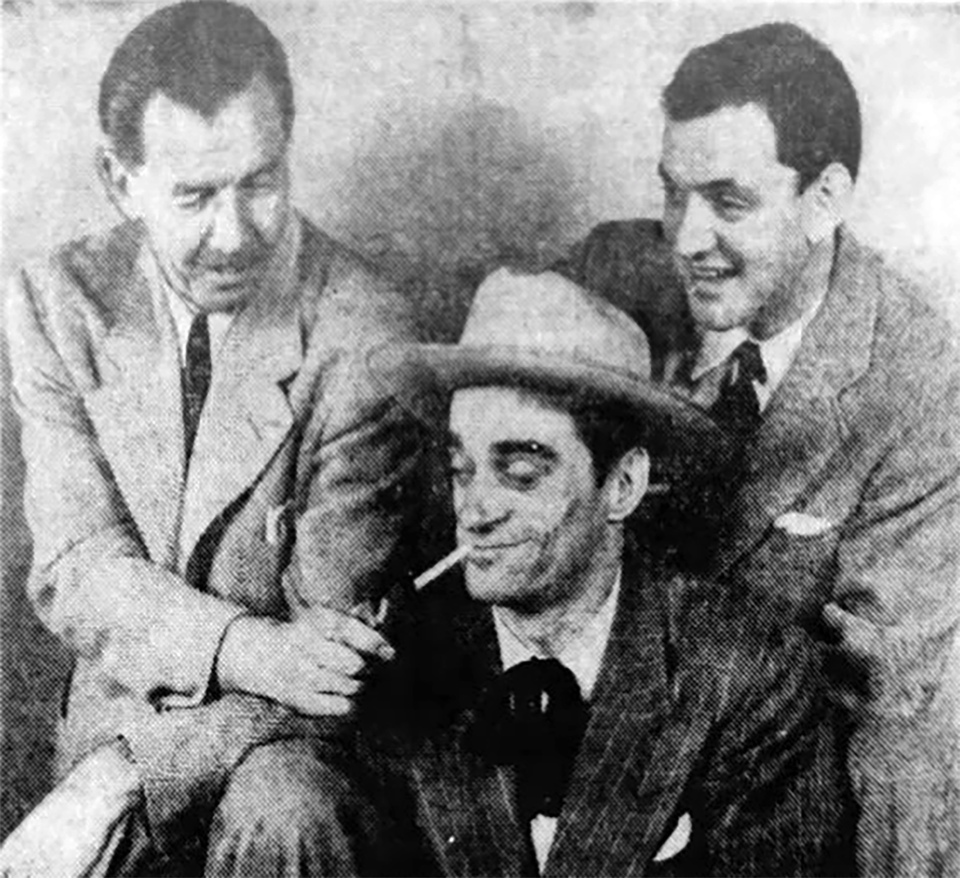
©NBCUniversal/Newspapers.com
During World War II, Randall was drafted into the Army and served with the U.S. Army Signal Corps until his discharge, at which point he worked at the Olney Theatre in Montgomery County, Maryland. He went back to New York where he was in a touring production of The Barretts of Wimpole Street in 1946, and on Broadway in Antony and Cleopatra (1947 to 1948) and Caesar and Cleopatra (1949 to 1950).
In between, he got involved with radio, most famously portraying Reggie York from 1949 to 1952 in the drama I Love a Mystery, about three friends running a detective agency who traveled the world looking for adventure.

(PhotJohn Springer Collection/CORBIS/Corbis via Getty Images
His first television series arrived in the form of the comedy Mister Peepers, which ran from 1952 to 1955 and saw him playing history teacher Harvey Weskit, best friend of Wally Cox's (the voice of Underdog) science teacher Robinson J. Peepers.
The show, describes Wikipedia, "often involved Peepers coping with misbehaving inanimate objects or embarrassing moments. In a typical scene, Peepers sees a hopscotch grid chalked on a sidewalk and, thinking himself alone, plays the game with abandon, only to discover that his girlfriend Nancy has been silently watching the entire time."
"Mr. Peepers is good, because at the basis of it is an honest, humane drive to be truly interesting and amusing to people, and not just get easy laughs," Randall told the media at the time.
"The characters grow as we work with them and become more and more real. For instance, when Mr. Weskit was on for the first time, he was a stereotype of an impossible stuffed shirt, the well-dressed man — the kind of a guy who would wear a weskit. Now he's a human being. I bet every man considers himself a smooth dancer, a swell athlete and extremely attractive to women. I know I do, anyway. So I just let those traits come out in Weskit. People only laugh at them, because they're true."
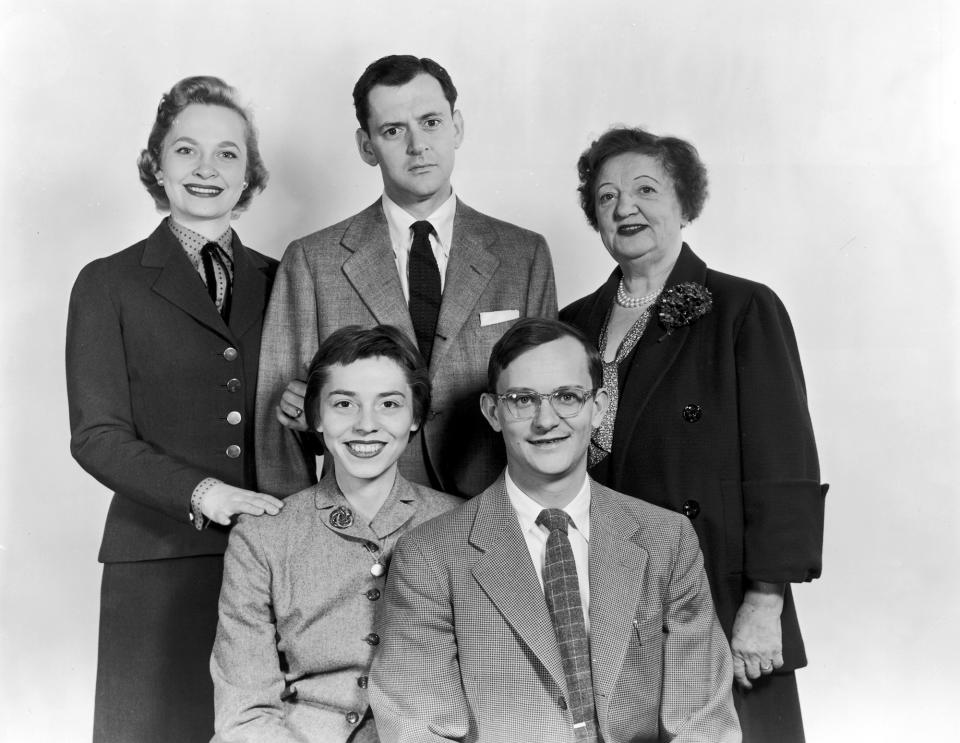
NBC Television/Getty Images
By the time the show ended its run, Randall, who had still been appearing on stage, was ready for a change, and found it in the Broadway hit Inherit the Wind, which ran from 1955 to 1957. "I was beginning to get too identified with Wes, but the three years I spent on the Mister Peepers Show were the most beautiful years of my life. Not because it was the greatest show in the history of TV, but because it was so great working with such marvelous people."
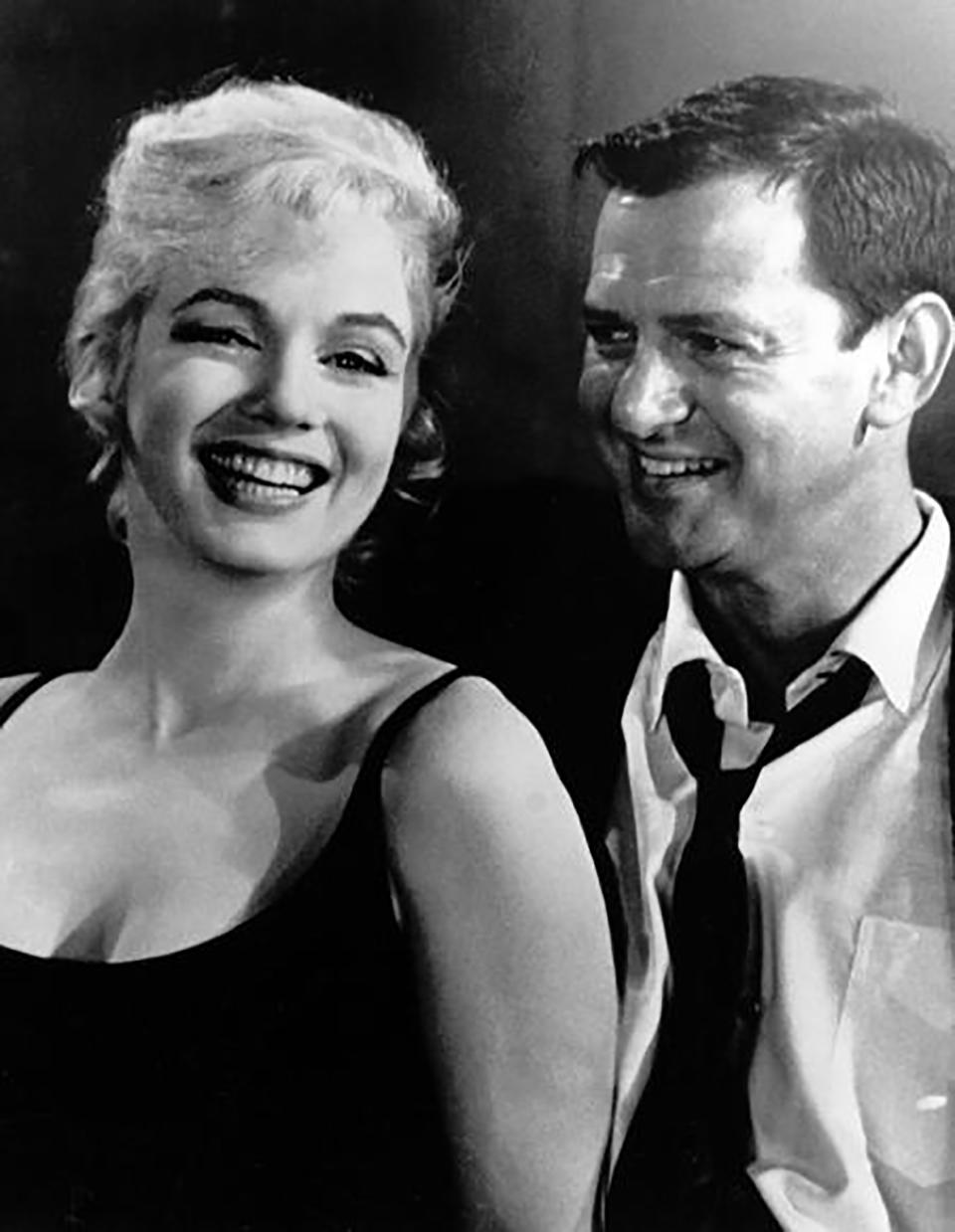
©20th Century Fox/IMDb
Like dominoes falling (in a good way), Mister Peepers led to Inherit the Wind, which led the actor to Hollywood for three movies in 1957 that cemented his stardom: Oh, Men! Oh, Women! (starring Ginger Rogers and David Niven), Will Success Spoil Rock Hunter? (opposite Jayne Mansfield) and a leading role in No Down Payment (also starring Joanne Woodward and Sheree North). And then it was back to Broadway, anthology television and a return to Hollywood costarring with Debbie Reynolds in The Making Game (1959), supporting Doris Day and Rock Hudson in Pillow Talk (1959), and with Marilyn Monroe in Let's Make Love (1960).
Perhaps his most challenging role to that time came in the form of 1964's 7 Faces of Dr. Lao, which sees him playing Chinese Dr. Lao, Merlin the Magician, Greek prophet Appolonius, an Abomindable Snowman, the mythological Medusa, a sea serpent and a character that is half-man, half-goat.
"I actually play seven parts, but wear only six faces," Randall told The San Francisco Examiner. "My other 'face' is a snake; I'm the snake's voice. These are creatures in a circus and are projections of Doctor Lao's personality. It's based on a wonderful book, The Circus of Dr. Lao. It came out in 1935 and has had a small but devoted band of readers ever since. It takes almost two hours a day to put on a face.
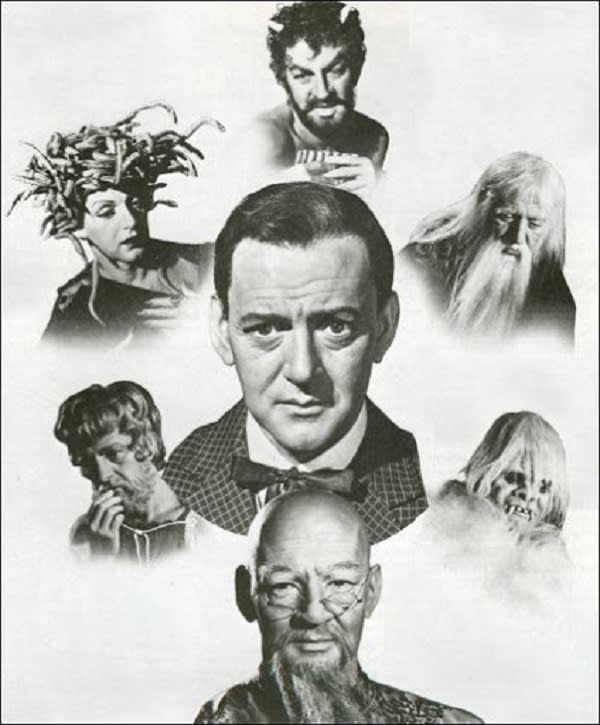
©MGM/courtesy MovieStillsDB.com
"The different parts of my face are glued on, and it can be painful," he added. "Not only do I wear different faces, I also have wigs and different bodies. As the Medusa, I'm a lady. I'll wear hooves as the goat character. I really leaped at this part. It's an actor's dream."
The Odd Couple
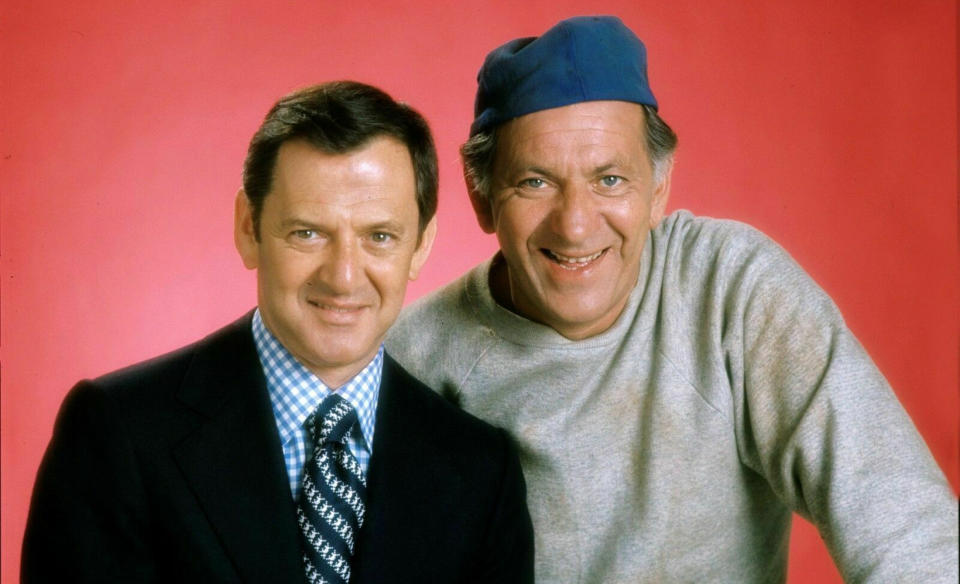
©Paramount Pictures/courtesy MovieStillsDB.com
While Tony Randall was still enjoying success in film and on Broadway, it's likely he found the draw of the TV version of The Odd Couple too irresistible to ignore. Created by Neil Simon, it debuted on Broadway in 1965 with Walter Matthau as sportswriter and uber-slob Oscar Madison and The Honeymooners' star Art Carney as fastidious Felix Unger, both divorced and electing to share an apartment, though they end up driving each other crazy.
Three years later it was adapted into a hit film with Matthau reprising his role and Jack Lemmon joining him as Felix. For television, series creators Garry Marshall and Jerry Belson wanted Jack Klugman as Oscar and Randall as Felix, and although it took heavy negotiations, they got them.
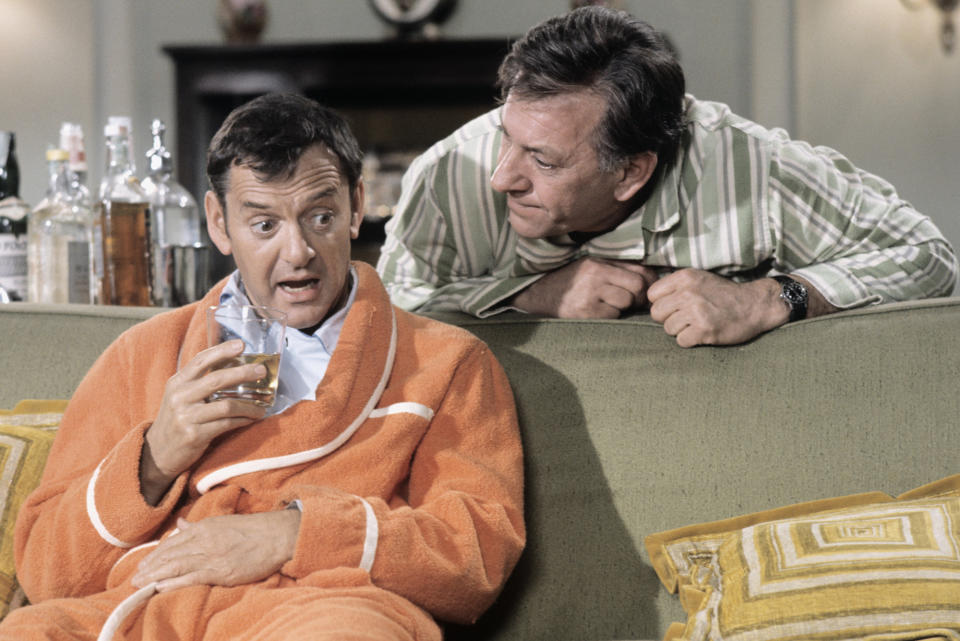
©Paramount Pictures/courtesy MovieStillsDB.com
Never a hit during its original run (though it became a mega-success in reruns), The Odd Couple did make it through five seasons from 1970 to 1975 and 114 episodes. In a situation that Marshall would have to deal with again with Happy Days, the first season was filmed like a movie with one camera, whereas season two onwards was filmed with three cameras and a live studio audience in the manner Desi Arnaz pioneered with I Love Lucy in the 1950s.
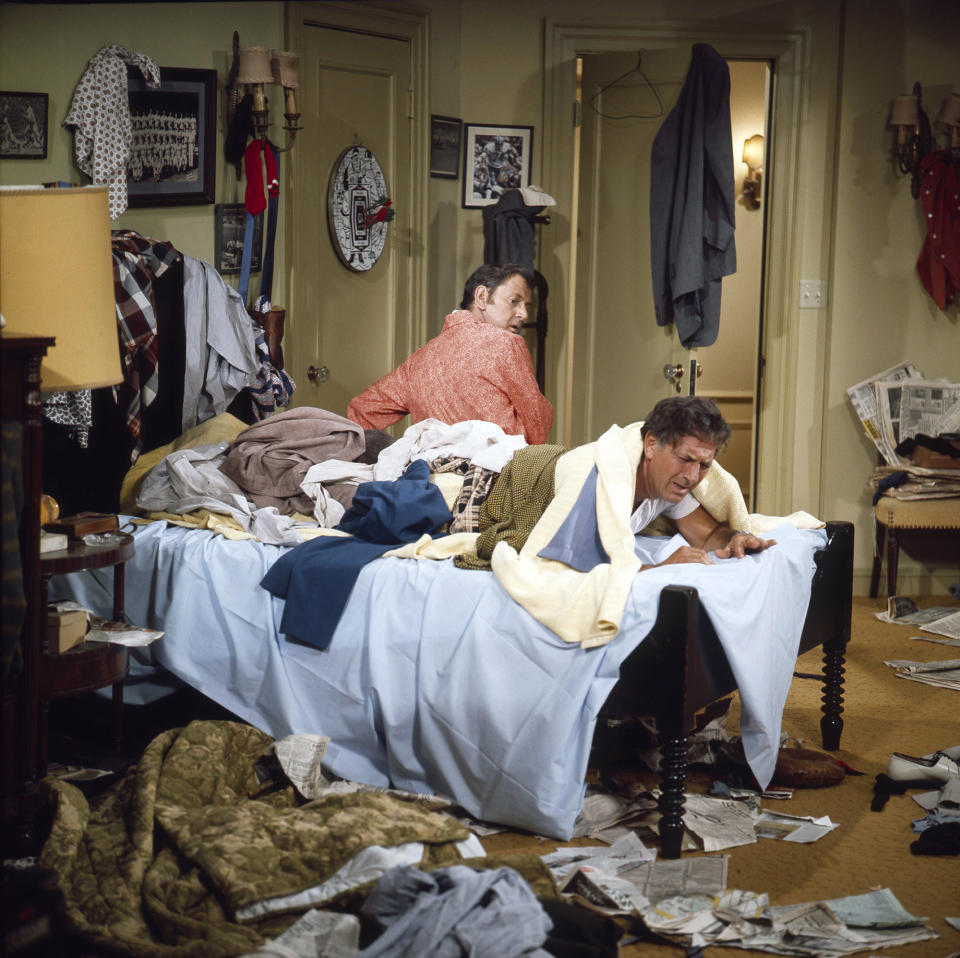
©Paramount Pictures/courtesy MovieStillsDB.com
Before the show debuted, Randall did an interview with the Star Tribune and commented, "It's eerie, the way everybody talks to us about the show's being a hit before it's even been on the air. But there's been that feeling about it around the studio and I think it has to do with the quality of the scripts we've done.
"We've done 12 scripts so far, and I don't think we've done a bad one yet, because we've thrown out the bad ones, Klugman and I. Jack has played Oscar in so many productions of the original play, and I've played Felix in so many productions, that we feel we know these guys. When they come in with scripts that are a falsification of either character, we know it. And we always agree.
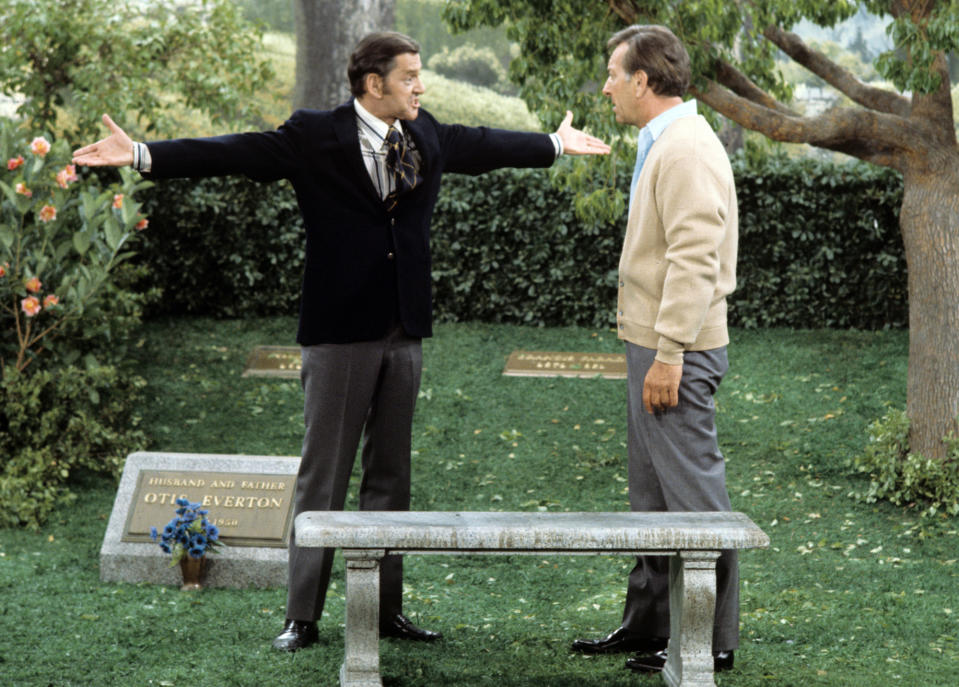
©Paramount Pictures/courtesy MovieStillsDB.com
"If Jack doesn't like something," he elaborated, "inevitably it's something that I don't like, either, and vice-versa. So far we've thrown out four scripts and that's very expensive, because they had a lot of money invested in them. Now maybe if the show does run a long time, we won't be able to maintain those standards and we'll have to start doing some of those others, but I hope not. New writers, in particular, come in with scripts full of gags, gags, gags, because they want to impress the producers. I'm not all that interested in being funny all the time. These are really very sad characters, these divorced men living together, and when we lose that quality, I think we lose the show."
The Tony Randall Show
By the time The Odd Couple was ending, Jack Klugman was happy to move on to Quincy, M.D., whereas Randall would have been happy to continue with the show as he believed there were more Oscar and Felix stories to tell. You could sense his disappointment at the 1976 Emmy Awards when he won for his portrayal of the character and his comments were to thank the academy while lamenting, "I only wish I still had a show."
Well, in 1976 he did in the form of The Tony Randall Show. Created by Tom Patchett and Jay Tarses, it was produced through MTM (Mary Tyler Moore) Productions and would run from 1976 to 1978 for a total of 44 episodes. In it, Randall plays Philadelphia Judge Walter Franklin, a talented judge who is widowed and coping with life as a single parent of his daughter and son.
There was a lot of behind-the-scenes turmoil with Randall not wanting to work with Patchett and Tarses, and them not really wanting to work with him. The creators also wouldn't deal with the network (ABC in Season 1) and the show was canceled. But then MTM's Grant Tinker convinced CBS to pick it up and the junior writers became story editors: Gary David Goldberg (later to create Family Ties, Spin City and Brooklyn Bridge) and Hugh Wilson (creator of WKRP in Cincinnati and Frank's Place).
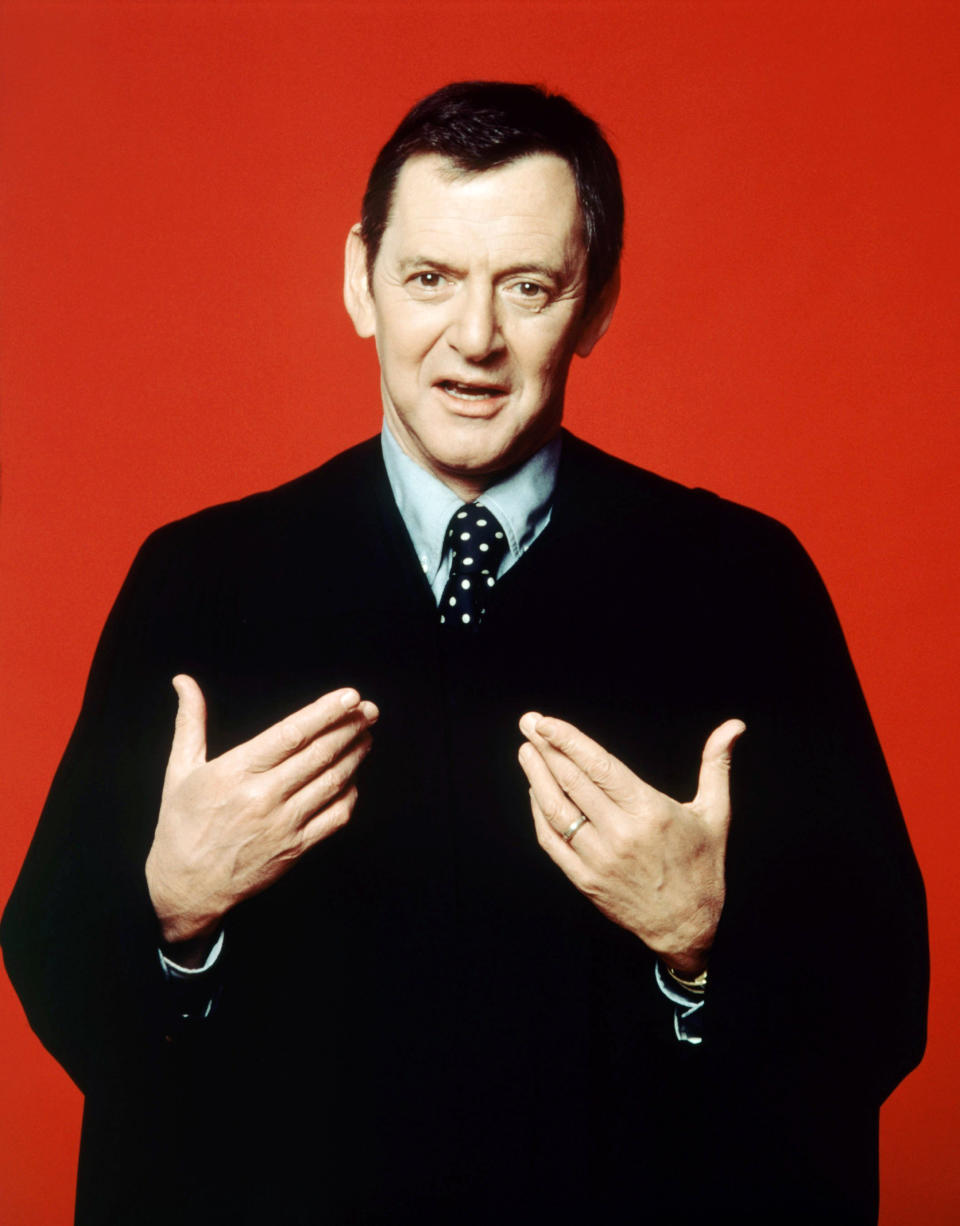
©20th Television/courtesy MovieStillsDB.com
In detailing the creation process, Randall said to The Morning Call on September 23, 1976, "Grant Tinker gathered the writers and we sat around throwing out concepts — a school teacher, a university professor, a pro-football coach. The judge won out and the writers took it from there. I personally objected to the idea of seeing another comedy based in Los Angeles. I wanted to show an older America. We settled for Philadelphia and went back there to shoot location scenes.
He continues, "The important thing is I didn't want to be a clown. Then credibility goes out the window. My character is a man who sends a guy up for life and then goes home where he can't run his own children. There will be laughs on the show, but they are going to come at home and we'll stick in as many as we can get."
When The Evening Sun asked his preference, Felix Unger or Judge Franklin, he replied, "Neither. I'm an actor and I loved doing both of them. I don't care whether I'm playing comedy or straight parts. It's all acting, and I've never not worked."
Love, Sidney
And that is not an exaggeration: there were always TV movies, film roles, guest appearances, talk shows, game shows — the list goes on. And in 1981, there was the NBC TV movie Sidney Shorr: A Girl's Best Friend, in which he played a reclusive illustrator whose mother recently passed away and whose live-in lover, Martin, has left him (not to put too fine a point on it, but Sidney Shorr is gay).
He befriends Laurie Morgan (Lorna Patterson), who eventually moves in so that both of them can afford a New York apartment. When Laurie finds herself pregnant, she, Sidney and her daughter, Patti (Kaleena Kiff) become a true family, though when she becomes engaged and is going to move to Los Angeles, he files for custody.
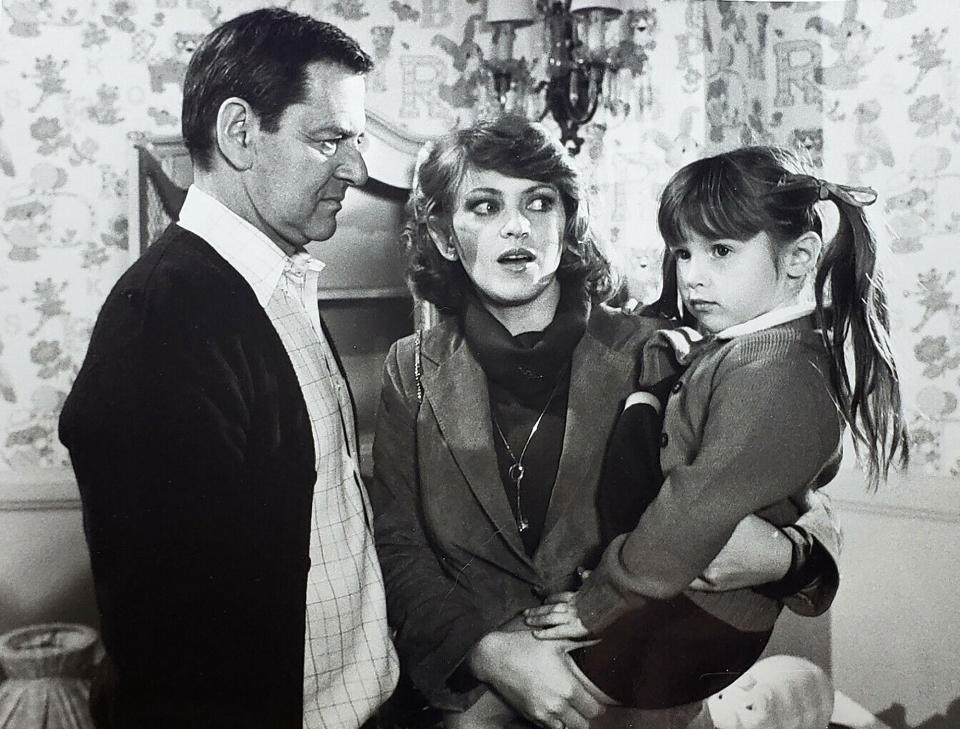
©WBDiscovery/IMDb
Obviously quite dramatic, but then NBC somehow saw in the set-up the possibility of a sitcom version, which would eventually become Love, Sidney, which ran from 1981 to 1983 and 44 episodes.
Tony Randall reprised his role of Sidney Shorr and the sitcom turned out to be a continuation of the movie in that Laurie's (now played by Swoosie Kurtz) marriage has fallen apart, resulting in her and Patti (Kaleena Kiff reprising the role) coming back to New York and moving back in with Sidney. Whereas his sexual orientation was dealt with in the TV movie, the weekly series made everything far more ambiguous, though that started to change in season two.
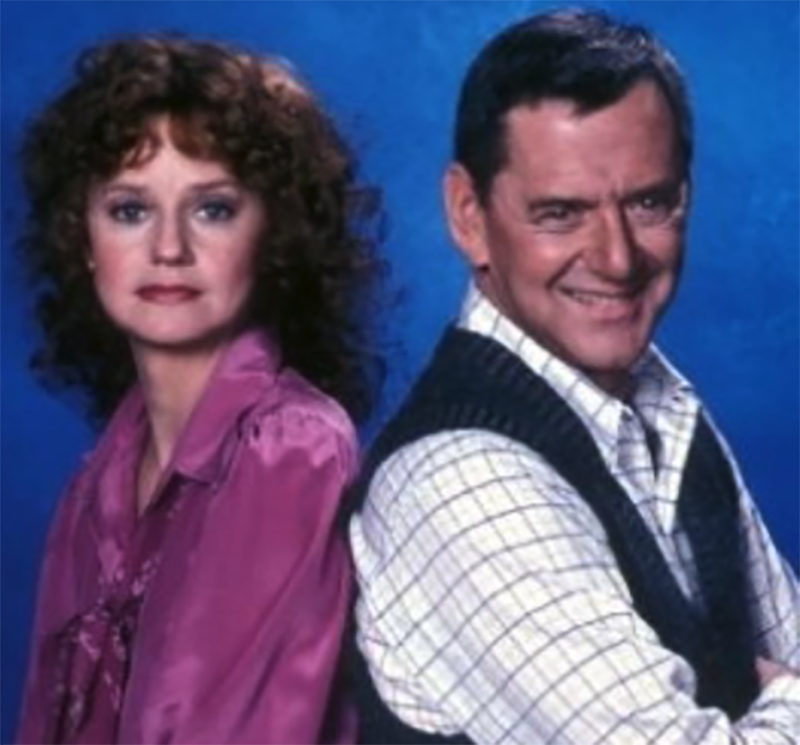
©WBDiscovery/Wikipedia
The one-two punch of losing The Odd Couple and The Tony Randall Show over a few year span had turned him off to the idea of another series, Randall said. The reason he changed his mind? As he told The Standard-Star in 1981, "I certainly liked Sidney Shorr. It turned out to be a really wonderful movie. I was satisfied that it was good and I was ready to walk away from it. But then they came to me and made me an offer I couldn't refuse. They said that if I did the series, they'd shoot in New York and would give me artistic control. For several years I've been trying to organize a classic repertory theater in New York and had very little luck raising money. This gave me the seed money for that project."
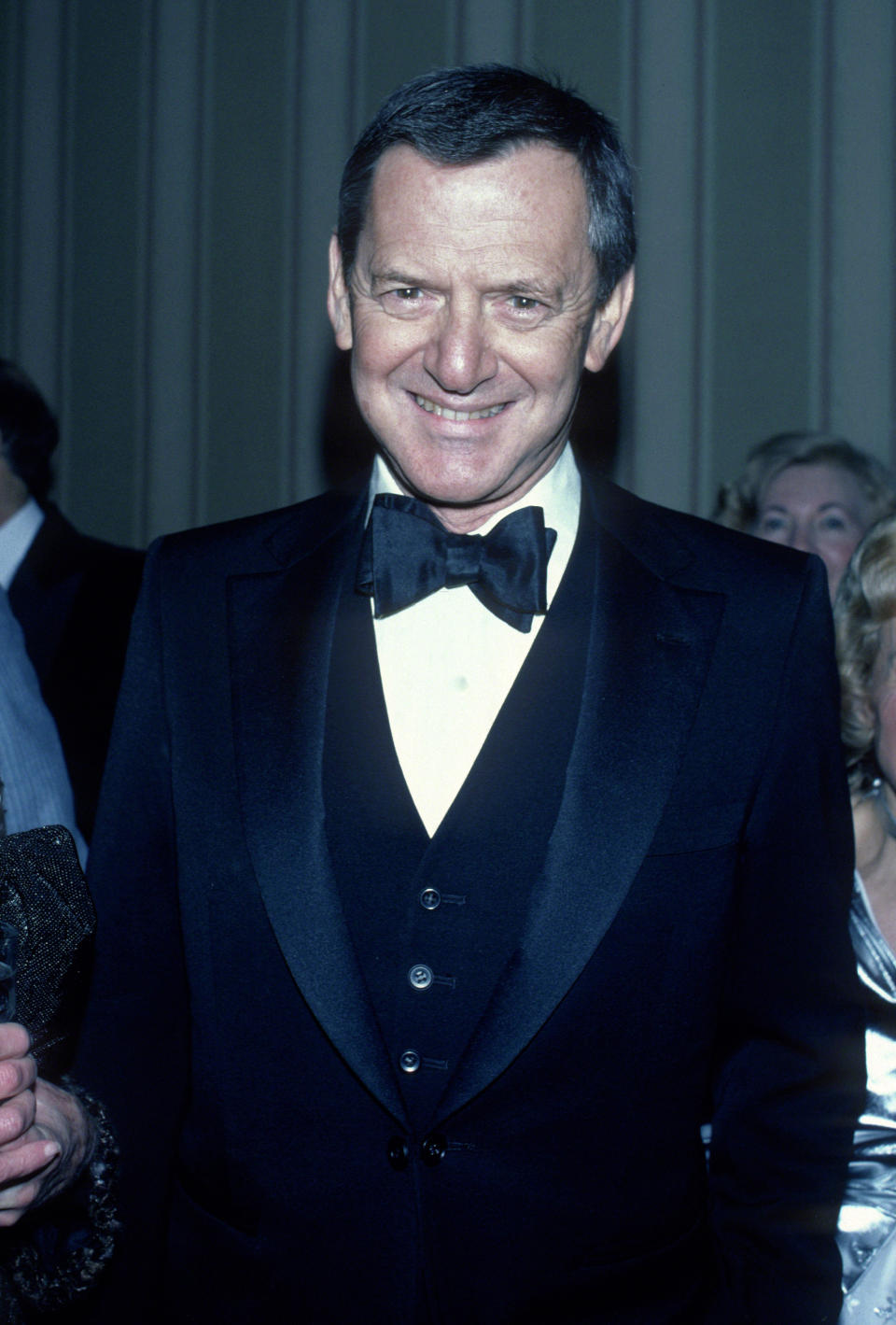
Images Press/IMAGES/Getty Images
In speaking to the Television Academy, Tony Randall discussed what Love, Sidney was dealing with: "In the film he never said, 'I'm gay,' but you understood perfectly that he was gay by reference to Martin, whose picture was there. That was all kept in the series and we did 44 shows. And in every single one of those shows, it was implicit, never explicit, but it was always there."
Randall adds, "It wasn't a show about homosexuality, but we were attacked by the moral majority, we were attacked by the Right Wing, And we were attacked by the gay advocates, because we didn't go far enough. What Love, Sidney was about was this man's need for a family, and they said, 'That's not an honest picture of homosexuality. Not every homosexual wants a family.' I don't believe that. I believe everybody wants a family."
The Later Years
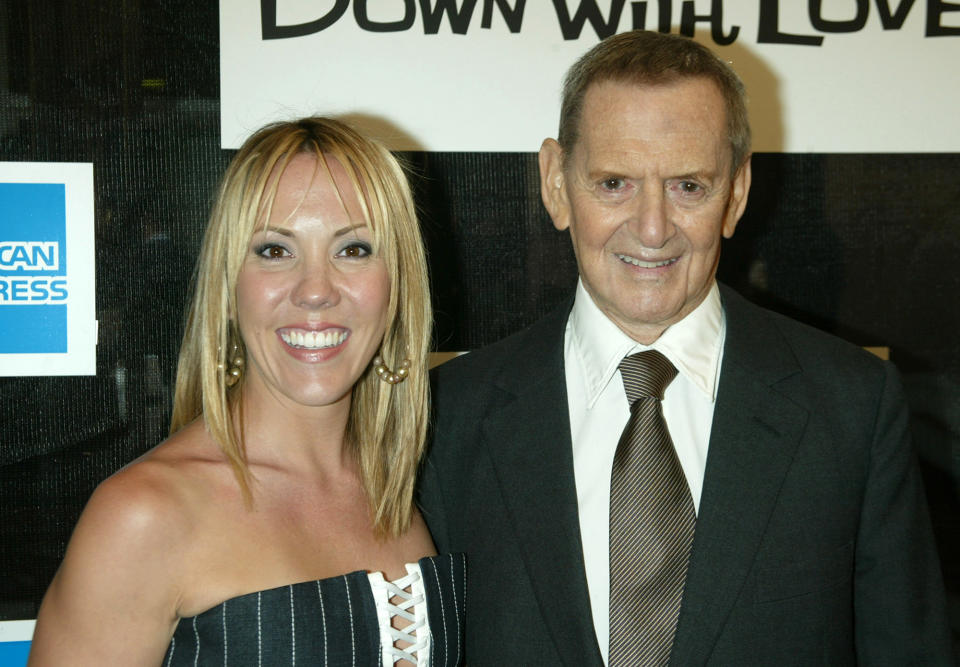
Jim Spellman/WireImage
In 1991, Tony Randall founded the National Actors Theatre, which was based at Pace University and staged 14 productions between 1991's The Crucible and 1997's The Sunshine Boys, which co-starred Jack Klugman.
Prior to that, the duo appeared in the TV movie The Odd Couple: Together Again, which, unfortunately, was poorly conceived and executed. However, between that and various performances of the original play, Randall helped and encouraged Klugman through his battle with throat cancer, the two of them growing closer than they'd ever been before.
He pushed his career to the very end, his final appearances on the stage and film coming in 2003, Down with Love representing the former and Right You Are the latter. In his personal life he was married to his high school sweetheart Florence Gibbs from 1938 until she passed away in 1992.
Three years later, when he was 75, he married 25-year-old Heather Harlan, who would give birth to two children — Julia in 1997 and Jefferson in 1998 — and they were together until Randall himself died on May 17, 2004 of pneumonia contracted in the aftermath of coronary bypass surgery. He was 84.
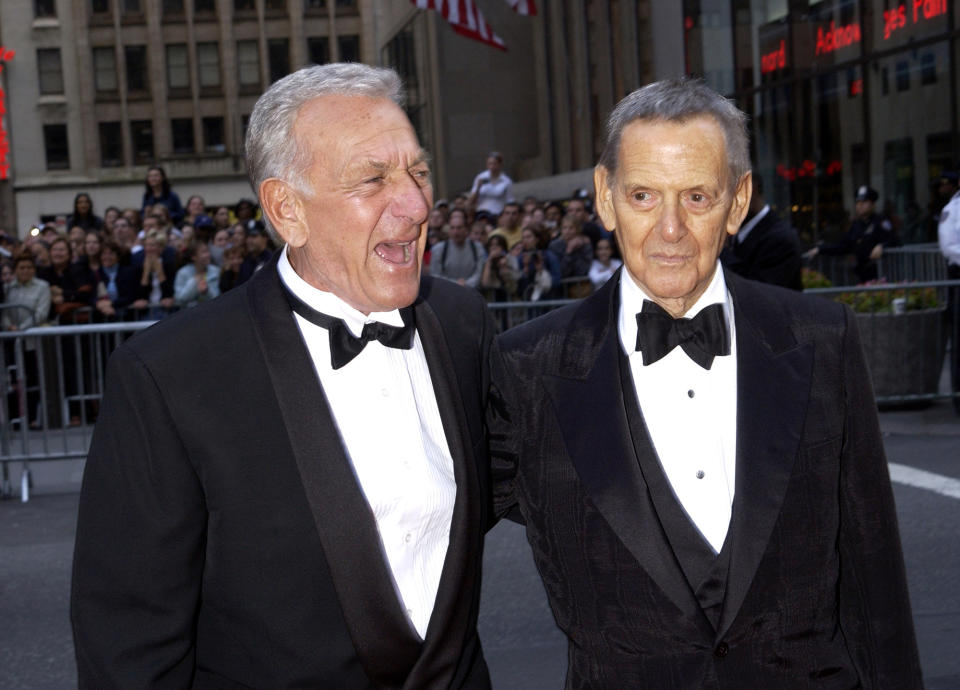
KMazur/WireImage
Back in 1983 he did an interview with The Philadelphia Inquirer in which he reflected on his TV work. "They were all the kind of shows that later people would say, 'Oh, that was a classic!'" he mused. "Mr. Peepers wasn't a hit — it lasted three years. The Odd Couple was never a hit — it lasted five years because one man at the network believed in us. He said, 'This is the best show we've got; I'm not letting it go.' And there are not people like that at the networks anymore. So, I've never been a success. I've made a good living, but I've never been in a success."
The life and career he shared with all of us over the course of 60 years would beg to differ.
Enjoy Much More Classic TV Coverage
See the 'Happy Days' Cast Then and Now — And Find Out What They're Doing Today
Origin of 'Nanu, Nanu' and More Little-Known Secrets About the 'Mork & Mindy' Cast
10 Magical Behind-the-Scenes Facts About 'I Dream of Jeannie'

